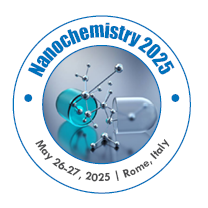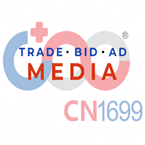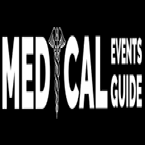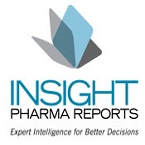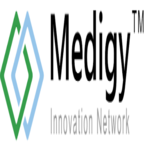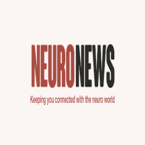Session and Tracks
-
Targeted Nanoparticle Drug Delivery: Precision Medicine Advances
Targeted Nanoparticle Drug Delivery: Precision Medicine Advances explores the latest advancements in targeted nanoparticle drug delivery and its transformative role in precision medicine. Participants will learn how nanoparticles, meticulously engineered for specific drug delivery, enhance therapeutic outcomes by accurately targeting diseased cells while minimizing collateral damage. The session will cover the development of nanoparticles with surface modifications, such as antibodies or ligands, to ensure precise targeting. Recent innovations, including stimuli-responsive nanoparticles that release drugs in response to physiological triggers, will be highlighted. Additionally, the integration of nanoparticles with imaging technologies for real-time monitoring of drug delivery and efficacy will be discussed. The session will also address challenges such as ensuring biocompatibility and optimizing delivery efficiency. By presenting these advancements, the session aims to illustrate how targeted nanoparticle drug delivery is advancing precision medicine, offering more effective and personalized treatment options for complex diseases.
-
Nano-Biomaterials: Revolutionizing Tissue Regeneration Techniques
Nano-biomaterials are transforming tissue regeneration by leveraging their unique properties at the nanoscale to enhance healing and repair processes. These advanced materials, including nanoparticles, nanofibers, and nanocomposites, offer improved biocompatibility, controlled release of growth factors, and enhanced cellular interactions. By mimicking natural extracellular matrices and providing a conducive environment for cell growth, nano-biomaterials facilitate the regeneration of damaged tissues more effectively than traditional methods. Their high surface area-to-volume ratio and tunable physical and chemical properties enable precise control over cell behavior, leading to better integration and function of regenerated tissues. Additionally, nano-biomaterials can be engineered to deliver therapeutic agents directly to target areas, reducing side effects and improving overall treatment outcomes. As research progresses, these materials hold great promise for advancing regenerative medicine and offering innovative solutions for conditions that currently lack effective treatments.
-
Quantum Dots in Enhanced Biomedical Imaging
Quantum dots are transforming biomedical imaging with their exceptional optical properties and versatility. These nanometer-sized semiconductor particles exhibit size-tunable fluorescence, allowing them to emit light at specific wavelengths when excited by a light source. This tunability enables the creation of a wide spectrum of colors, facilitating multi-colored imaging of biological samples with high resolution and specificity. Unlike traditional fluorescent dyes, quantum dots are highly photostable, meaning they resist photobleaching and maintain their brightness over extended periods. This property is crucial for long-term imaging studies, as it reduces the need for frequent re-imaging and ensures consistent signal quality.Additionally, quantum dots can be conjugated with targeting molecules, such as antibodies or peptides, enabling precise targeting of specific cells or biomolecules. This targeted imaging capability enhances the ability to visualize and track cellular processes, molecular interactions, and tissue structures with high accuracy. Quantum dots also offer improved signal-to-noise ratios compared to conventional imaging agents, which leads to clearer and more detailed images.As research advances, quantum dots hold great promise for revolutionizing diagnostic and therapeutic applications by providing unparalleled insights into biological systems and disease mechanisms, thus improving early detection, monitoring, and treatment efficacy.
-
Personalized Medicine with Nanotechnology: Customizing Treatments
Personalized medicine, enhanced by nanotechnology, is revolutionizing how treatments are tailored to individual patients. Nanotechnology enables the development of highly specific diagnostic tools and therapeutic agents that can be customized to a patient’s unique genetic, molecular, and physiological profile. Nanoparticles, for instance, can be engineered to deliver drugs precisely to targeted cells or tissues, minimizing side effects and maximizing therapeutic efficacy. This targeted delivery system improves treatment outcomes and reduces the need for systemic therapies.Moreover, nanotechnology facilitates the creation of advanced diagnostic platforms that offer rapid, accurate, and comprehensive profiling of patients. For example, nanosensors and nanodevices can detect biomarkers at extremely low concentrations, allowing for early disease detection and monitoring of disease progression. These technologies enable clinicians to adjust treatment plans based on real-time data, leading to more effective and personalized care. Nanotechnology also supports the development of personalized vaccines and gene therapies by enabling precise manipulation of genetic material and enhancing the delivery of therapeutic genes. As a result, treatments can be customized not only to address specific diseases but also to cater to individual patient needs, paving the way for a new era of medicine where interventions are tailored to optimize each patient’s health and well-being.
-
Nanorobots: Transforming Precision Surgery and Therapeutics
Nanorobots are poised to transform precision surgery and therapeutics through their ability to operate at the molecular scale. These microscopic robots, designed with advanced nanotechnology, offer unprecedented precision in medical interventions. In surgery, nanorobots can navigate through the human body with remarkable accuracy, targeting specific tissues or cells for intervention without causing damage to surrounding areas. This precision minimizes invasiveness, reduces recovery times, and improves surgical outcomes.In therapeutics, nanorobots can deliver drugs or therapeutic agents directly to diseased cells, ensuring that medications are concentrated exactly where they are needed. This targeted delivery system enhances drug efficacy while reducing side effects commonly associated with systemic treatments. Nanorobots can also perform complex tasks such as repairing cellular structures or executing programmed actions to combat disease at a fundamental level. Their ability to operate autonomously or under external control allows for real-time monitoring and adjustments during treatment, leading to more personalized and effective therapeutic strategies. As technology advances, nanorobots are expected to enable a new era of medicine characterized by highly precise, minimally invasive procedures and tailored treatments that significantly improve patient outcomes and overall healthcare quality.
-
Smart Nanomaterials: Adaptive Systems for Medical Applications
Smart nanomaterials are revolutionizing medical applications through their ability to adapt and respond to changing environmental conditions or stimuli. These advanced materials are engineered with properties that allow them to alter their behavior, structure, or functionality in response to specific triggers such as pH changes, temperature fluctuations, or the presence of particular biomolecules. In medical applications, smart nanomaterials enhance diagnostic and therapeutic capabilities by offering dynamic and responsive solutions. For instance, in drug delivery systems, these materials can release therapeutic agents in a controlled manner when triggered by the physiological conditions of a target site, such as the acidic environment of a tumor. This responsiveness maximizes drug efficacy while minimizing side effects.Additionally, smart nanomaterials are used in imaging technologies to improve the accuracy of disease detection. Their ability to change optical properties in response to specific biomarkers allows for enhanced imaging contrast and resolution, aiding in early diagnosis and precise monitoring of diseases.Their adaptability extends to tissue engineering, where smart nanomaterials can mimic natural cellular environments and support dynamic cell growth and differentiation. As research progresses, these materials promise to offer innovative, adaptive solutions that transform how medical conditions are treated and managed, leading to more effective and personalized healthcare strategies.
-
Early Disease Detection Using Nano-Enabled Diagnostic Tools
Early disease detection is significantly advanced by nano-enabled diagnostic tools, which leverage nanotechnology to enhance sensitivity and accuracy in identifying diseases at their earliest stages. These tools utilize nanoparticles, nanosensors, and nanomaterials to detect biomarkers or pathological changes with unprecedented precision.Nanoparticles, for example, can be engineered to bind specifically to disease-related molecules or cells, enabling highly targeted detection. Their large surface area and functionalization capabilities improve the sensitivity of diagnostic assays, allowing for the identification of biomarkers at extremely low concentrations. This is crucial for early disease detection, where traditional methods may fall short.Nanosensors, integrated into diagnostic platforms, provide real-time monitoring and rapid analysis of biological samples. They can detect minute changes in environmental conditions or biological markers, offering early warnings of potential health issues. These sensors are often used in point-of-care devices, making them accessible for routine screenings and immediate results.Moreover, nano-enabled imaging techniques enhance the resolution and contrast of medical images, facilitating the visualization of early disease manifestations that might be missed by conventional imaging methods. Together, these advancements enable earlier intervention and treatment, improving patient outcomes and offering a proactive approach to managing health conditions. As technology progresses, nano-enabled diagnostics are set to play a pivotal role in personalized and preventative healthcare.
-
Nanotechnology in Vaccine Development: Improving Immunization
Nanotechnology is significantly enhancing vaccine development by offering novel approaches to improve immunization effectiveness and safety. Nanoparticles and nanomaterials are being used to create advanced vaccine delivery systems that enhance immune responses and ensure precise targeting of antigens.One major advancement is the development of nanoparticle-based vaccines, where nanoparticles serve as carriers for antigens. These nanoparticles can be engineered to mimic the size and structure of pathogens, thereby enhancing the immune system’s ability to recognize and respond to them. Their small size also allows for better distribution and penetration into target cells, improving the overall efficacy of the vaccine.Additionally, nanotechnology enables the creation of adjuvants—substances that enhance the body’s immune response to vaccines. Nanoparticles can act as adjuvants by delivering antigens in a way that stimulates a stronger and more durable immune response. They can also be used to encapsulate vaccines, protecting them from degradation and allowing for controlled release, which enhances the vaccine’s stability and effectiveness.Nanotechnology also facilitates the development of personalized vaccines by allowing for the precise targeting of specific strains or mutations of pathogens. This customization ensures that vaccines are more effective against evolving threats. As research continues, nanotechnology holds the potential to revolutionize vaccine development, leading to more effective, safer, and long-lasting immunization strategies.
-
Nanotoxicology: Evaluating and Addressing Safety Concerns
Nanotoxicology is an emerging field focused on evaluating and addressing the safety concerns associated with nanomaterials. As nanotechnology advances, understanding the potential toxicological effects of nanoparticles is crucial for ensuring their safe use in medical, industrial, and consumer applications.Nanotoxicology investigates how nanoparticles interact with biological systems, including their absorption, distribution, metabolism, and excretion. Due to their unique size and surface properties, nanoparticles can exhibit different behavior compared to bulk materials, potentially leading to unexpected toxicological effects. For instance, their small size allows for easy cellular uptake, which might lead to cellular or systemic toxicity if not properly managed. Research in nanotoxicology aims to identify and mitigate potential risks by studying the impact of nanoparticles on human health and the environment. This includes assessing potential acute and chronic effects, such as inflammation, oxidative stress, and genotoxicity. Developing standardized testing protocols and safety guidelines is essential for evaluating the risks associated with nanomaterials and ensuring their safe use.Furthermore, nanotoxicology contributes to designing safer nanomaterials by incorporating biocompatible and non-toxic properties into their design. This proactive approach helps prevent adverse effects and ensures that the benefits of nanotechnology are realized without compromising safety.
-
AI and Nanotechnology Integration for Advanced Healthcare Solutions
The integration of artificial intelligence (AI) and nanotechnology is paving the way for advanced healthcare solutions, offering transformative potential in diagnostics, treatment, and personalized medicine. AI enhances nanotechnology applications by providing sophisticated data analysis, pattern recognition, and predictive capabilities, which amplify the benefits of nanoscale innovations in healthcare.In diagnostics, AI algorithms process vast amounts of data from nanoscale sensors and imaging technologies to identify disease markers with high precision. This integration enables early and accurate detection of diseases, including cancer and neurological disorders, by analyzing patterns that may be missed by traditional methods.For treatment, AI-driven nanotechnology facilitates the development of smart drug delivery systems. AI models optimize the design and functionality of nanoparticles to ensure targeted delivery of therapeutics, enhancing drug efficacy and minimizing side effects. This approach also supports adaptive treatment strategies, where AI adjusts treatment protocols based on real-time data from nanomaterials. Personalized medicine benefits from AI and nanotechnology integration by tailoring treatments to individual genetic and molecular profiles. AI analyzes data from nanomaterial-based diagnostic tools to provide personalized health insights, leading to more effective and customized treatment plans.Together, AI and nanotechnology offer a synergistic approach that enhances healthcare solutions, leading to more precise, efficient, and personalized medical care.
-
Overcoming the Blood-Brain Barrier with Nanotechnology
Overcoming the blood-brain barrier (BBB) with nanotechnology represents a groundbreaking advancement in treating neurological disorders. The BBB is a selective permeability barrier that protects the brain from harmful substances but also complicates the delivery of therapeutic agents. Nanotechnology offers innovative solutions to bypass or manipulate this barrier effectively.Nanoparticles can be engineered to cross the BBB by exploiting natural transport mechanisms or by enhancing their ability to penetrate the barrier. For instance, nanoparticles can be coated with specific ligands or targeting molecules that bind to receptors on the BBB, facilitating their transport across the barrier. Additionally, nanoparticles can be designed to temporarily open tight junctions in the BBB, allowing therapeutic agents to pass through.Moreover, nanoscale drug delivery systems can encapsulate medications, protecting them from degradation and improving their ability to reach brain tissues. These systems can also release drugs in a controlled manner, ensuring sustained therapeutic effects and reducing the risk of side effects.Nanotechnology also enables the development of advanced imaging techniques to monitor the BBB and track the delivery of drugs in real-time. This approach enhances the precision of treatments for neurological conditions such as Alzheimer’s disease, Parkinson’s disease, and brain tumors, ultimately improving patient outcomes and expanding therapeutic possibilities.
-
Bio-Nano Interfaces: Enhancing Implant Biocompatibility
Bio-nano interfaces are pivotal in enhancing the biocompatibility of implants, integrating nanotechnology to improve how implants interact with biological tissues. These interfaces involve the use of nanomaterials and nanoscale modifications to optimize the surface properties of implants, promoting better integration and reducing adverse reactions.Nanotechnology enables the creation of implant surfaces with controlled nanostructures, such as nanotubes, nanowires, or nanocoatings, which mimic the natural extracellular matrix. These nanostructures enhance cellular adhesion, proliferation, and differentiation, leading to more effective and stable integration of implants with surrounding tissues. By promoting favorable cellular interactions, bio-nano interfaces reduce the risk of implant rejection and inflammation .Additionally, bio-nano interfaces can be engineered to release bioactive molecules, such as growth factors or anti-inflammatory agents, in a controlled manner. This localized release supports tissue healing and regeneration around the implant, further improving biocompatibility.Advanced techniques, such as surface functionalization with specific peptides or proteins, can also be employed to guide cellular responses and improve implant performance. By leveraging these nano-engineered solutions, bio-nano interfaces significantly enhance the functionality and longevity of implants, leading to better clinical outcomes and patient satisfaction in various medical applications.
-
Nanomedicine Strategies for Combatting Infectious Diseases
Nanomedicine strategies are revolutionizing the approach to combating infectious diseases by harnessing the unique properties of nanotechnology for more effective prevention, diagnosis, and treatment. These strategies utilize nanoparticles and nanomaterials to target pathogens with unprecedented precision and efficacy.In diagnostics, nanomedicine employs nanosensors and nanoparticle-based assays to detect infectious agents at extremely low concentrations. These tools can provide rapid, sensitive, and specific identification of pathogens, enabling early diagnosis and timely intervention.For treatment, nanomedicine offers advanced drug delivery systems that enhance the efficacy of antimicrobial agents. Nanoparticles can be engineered to deliver drugs directly to infected cells or tissues, improving the concentration of therapeutics at the site of infection while minimizing systemic side effects. This targeted delivery also helps overcome drug resistance by ensuring that higher drug levels reach the pathogens.Additionally, nanomedicine enables the development of nanoparticle-based vaccines and immunotherapies. Nanoparticles can act as carriers for antigens or adjuvants, enhancing immune responses and improving vaccine efficacy. They can also be used to deliver gene therapies or RNA-based treatments that target specific pathogens or their genetic material.Overall, nanomedicine strategies offer innovative solutions for combating infectious diseases, improving diagnostic accuracy, therapeutic effectiveness, and patient outcomes.
-
Gene Therapy Delivery Challenges and Nanoparticle Solutions
Gene therapy holds significant promise for treating genetic disorders and diseases by directly modifying or correcting genetic material. However, delivering therapeutic genes effectively poses several challenges, which nanoparticles are uniquely positioned to address.One major challenge in gene therapy is ensuring precise delivery of genetic material to target cells while avoiding degradation or off-target effects. Traditional delivery methods often struggle with inefficient uptake and potential toxicity. Nanoparticles, due to their size and surface properties, offer a solution by facilitating targeted and controlled delivery of genetic materials such as DNA, RNA, or CRISPR components.Nanoparticles can be engineered to protect genetic payloads from degradation by nucleases, ensuring that therapeutic genes remain intact until they reach the target cells. Additionally, they can be modified with ligands or antibodies that bind specifically to cell surface receptors, promoting efficient cellular uptake and reducing off-target effects.Moreover, nanoparticles can be designed to release their payloads in response to specific stimuli, such as changes in pH or temperature, ensuring that genetic materials are delivered precisely where and when needed. This controlled release enhances the efficiency of gene therapy while minimizing potential side effects.Overall, nanoparticles provide a versatile and effective means of overcoming the delivery challenges associated with gene therapy, enabling more precise, efficient, and safer therapeutic interventions.
-
Regenerative Medicine Supported by Nano-Enhanced Scaffolds
Regenerative medicine is greatly advanced by nano-enhanced scaffolds, which play a crucial role in tissue engineering and regenerative therapies. These scaffolds, embedded with nanomaterials or incorporating nanoscale features, provide a supportive framework that mimics the natural extracellular matrix, promoting effective tissue regeneration and repair.Nano-enhanced scaffolds offer several advantages over traditional scaffolding materials. Their high surface area-to-volume ratio and customizable nanoscale properties improve cellular adhesion, proliferation, and differentiation. This leads to more efficient integration of new tissue with the host, enhancing overall regenerative outcomes. Nanofibers, nanotubes, and nanoparticle coatings can be used to create scaffolds that closely resemble natural tissue architecture, providing a more conducive environment for cell growth and function.Additionally, these scaffolds can be engineered to deliver bioactive molecules, such as growth factors or cytokines, in a controlled manner. This localized delivery stimulates cell activity and tissue development, accelerating the healing process and improving the functionality of the regenerated tissue.Nano-enhanced scaffolds also enable better vascularization and integration of engineered tissues, which are critical for the success of regenerative therapies. By incorporating advanced nanotechnology, regenerative medicine achieves more effective and durable tissue repair, offering promising solutions for conditions such as chronic injuries, organ failure, and degenerative diseases.
-
Nano-Optics: Advancements in Medical Imaging and Therapy
Nano-optics is driving significant advancements in medical imaging and therapy by exploiting the unique properties of nanomaterials to enhance both diagnostic and therapeutic applications. At the heart of these advancements is the ability of nanoparticles and nanostructures to manipulate light at the nanoscale, leading to improved imaging techniques and targeted treatments.In medical imaging, nano-optics improves resolution and contrast through the use of nanoprobes that can be specifically designed to target and bind to disease markers. These nanoprobes enhance signal detection, allowing for earlier and more accurate diagnosis of conditions such as cancer, cardiovascular diseases, and neurological disorders. Techniques like surface-enhanced Raman scattering (SERS) and fluorescence resonance energy transfer (FRET) benefit from nano-optics by increasing sensitivity and providing detailed molecular information.For therapy, nano-optics facilitates novel approaches such as photothermal therapy, where nanoparticles are used to absorb light and convert it into heat to selectively destroy cancer cells. Additionally, targeted photodynamic therapy utilizes light-activated nanoparticles to produce reactive oxygen species that kill cancerous cells while sparing surrounding healthy tissue.Overall, nano-optics represents a transformative leap in medical technology, offering enhanced imaging capabilities and precise, localized therapeutic interventions that improve patient outcomes and expand the possibilities of modern medicine.
-
Ethics and Regulation of Nanomedicine: Navigating Challenges
The ethics and regulation of nanomedicine are crucial for ensuring that advancements in this field are developed and utilized responsibly. As nanomedicine integrates nanotechnology into healthcare, several ethical and regulatory challenges arise, necessitating careful navigation to protect public health and safety.One major ethical concern is the potential for unforeseen long-term effects of nanomaterials on human health and the environment. Given their unique properties and behavior at the nanoscale, nanoparticles may pose risks that are not fully understood, making rigorous preclinical and clinical evaluations essential. Transparent reporting and ongoing monitoring are crucial to address these uncertainties.Regulation of nanomedicine involves creating frameworks that address the unique characteristics of nanomaterials. Traditional regulatory guidelines may not fully account for the specific risks associated with nanoscale substances, requiring the development of tailored standards for safety, efficacy, and quality control. This includes assessing the biocompatibility, potential toxicity, and environmental impact of nanomaterials.Additionally, ethical considerations include ensuring informed consent for patients undergoing treatments involving nanomedicine. Patients should be fully aware of the potential risks and benefits.Navigating these challenges requires collaboration between scientists, regulators, and ethicists to develop comprehensive guidelines and policies that balance innovation with safety and ethical responsibility, ultimately fostering the responsible advancement of nanomedicine.
-
Cardiovascular Innovations through Nanotechnology Applications
Nanotechnology is driving transformative innovations in cardiovascular medicine, offering new solutions for diagnosing, treating, and preventing heart and vascular diseases. These advancements leverage the unique properties of nanomaterials to enhance the precision and efficacy of cardiovascular interventions.In diagnostics, nanotechnology enables the development of highly sensitive imaging agents and biosensors. Nanoparticles can be engineered to bind specifically to cardiovascular biomarkers, allowing for early and accurate detection of conditions such as atherosclerosis or heart failure. Techniques like magnetic resonance imaging (MRI) and optical imaging are enhanced by these nanoparticles, providing clearer and more detailed views of cardiovascular structures.For treatment, nanotechnology offers innovative drug delivery systems that target cardiovascular tissues more effectively. Nanoparticles can deliver therapeutics directly to sites of disease, such as plaque in arteries, reducing the risk of systemic side effects and improving drug efficacy. Additionally, nanomaterials are used in the development of stents and grafts with enhanced biocompatibility and mechanical properties, promoting better integration and reducing complications.Nanotechnology also contributes to regenerative medicine by enabling the creation of nanostructured scaffolds that support the repair and regeneration of damaged cardiovascular tissues. These scaffolds can be designed to release growth factors and other bioactive molecules, accelerating healing and improving outcomes.Overall, nanotechnology is revolutionizing cardiovascular care by offering more precise diagnostics, targeted treatments, and advanced therapeutic strategies
-
Accelerating Wound Healing with Nanomaterials
Accelerating wound healing with nanomaterials represents a significant advancement in regenerative medicine, offering innovative solutions for enhancing tissue repair and recovery. Nanomaterials, including nanoparticles, nanofibers, and nanocomposites, are utilized to improve various aspects of the wound healing process through their unique properties and functions.Nanomaterials can be integrated into wound dressings to provide several benefits. For instance, silver nanoparticles exhibit antimicrobial properties that reduce the risk of infection, a common complication in wound healing. This helps to create a cleaner environment conducive to faster recovery. Additionally, nanofiber-based dressings mimic the extracellular matrix, providing an optimal scaffold for cell growth and tissue regeneration.Controlled drug delivery is another advantage of using nanomaterials in wound healing. Nanoparticles can be loaded with growth factors, anti-inflammatory agents, or other therapeutic agents and released gradually at the wound site. This targeted approach enhances cellular activity and accelerates tissue repair while minimizing systemic side effects.Nanomaterials also support advanced wound healing strategies such as tissue engineering. Nanostructured scaffolds can be designed to promote cell adhesion, proliferation, and differentiation, leading to more effective and accelerated wound closure.Overall, nanomaterials offer a multifaceted approach to wound healing, improving infection control, drug delivery, and tissue regeneration, ultimately leading to faster and more effective recovery.
-
Emerging Trends in Nano Chemistry and Nano Medicine
Emerging trends in nanochemistry and nanomedicine are reshaping the landscape of science and healthcare with groundbreaking innovations. In nanochemistry, recent advancements focus on the synthesis and functionalization of nanomaterials with precise control over their size, shape, and surface properties. Techniques such as bottom-up synthesis and self-assembly are being refined to produce nanomaterials with tailored functionalities for specific applications. This progress is leading to the development of new catalysts, sensors, and energy storage solutions, enhancing efficiency and performance in various fields.In nanomedicine, emerging trends include the development of smart drug delivery systems and personalized therapies. Nanoparticles are being engineered to deliver drugs with high specificity to target cells or tissues, minimizing side effects and improving treatment efficacy. Recent innovations also involve the integration of diagnostic and therapeutic functions into single nanoplatforms, enabling simultaneous imaging and treatment, known as theranostics.nother trend is the exploration of nanomaterials for regenerative medicine. Advances in nano-scaffolds and bioengineered tissues are facilitating more effective tissue repair and regeneration. Additionally, nanomedicine is increasingly focusing on precision medicine, leveraging nanoscale technologies to tailor treatments based on individual genetic and molecular profiles.These emerging trends highlight the rapid evolution of nanochemistry and nanomedicine, promising transformative impacts on science, healthcare, and technology.








